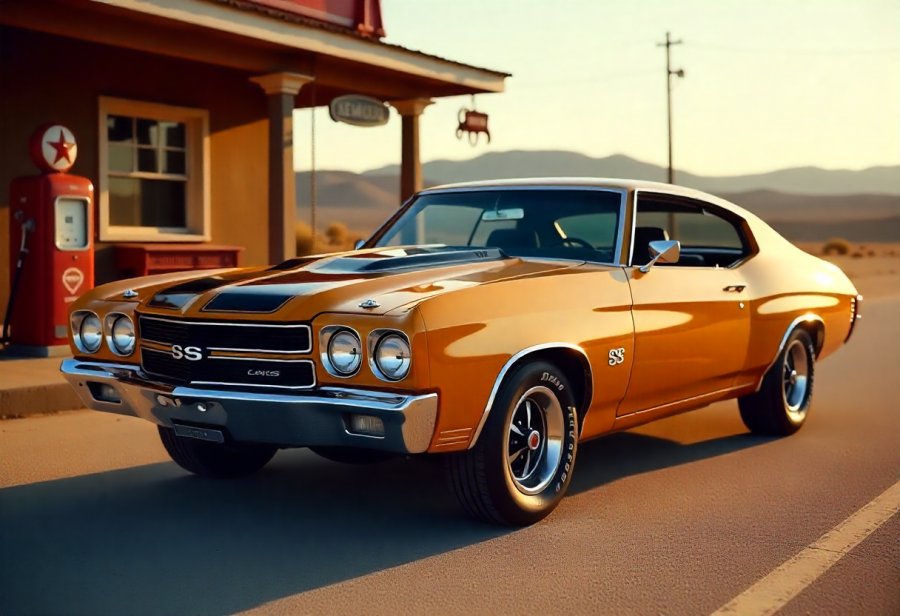Christopher Columbus’s voyage in 1492 is often hailed as the dawn of a new era, connecting distant worlds and revolutionizing global trade and exploration. Yet beneath this celebrated narrative lies a darker, more complex legacy rooted in conquest, exploitation, and cultural upheaval. His discovery of the Americas initiated centuries of colonization marked by violence, forced labor, and devastating impacts on indigenous populations. While the Columbian Exchange transformed ecosystems and diets worldwide, it also brought devastating diseases and cultural destruction. Today, Columbus’s legacy sparks fierce debate: is he a hero of discovery or a symbol of colonial brutality? As societies reevaluate his role, the story becomes a powerful reminder of exploration’s dual nature—bridging progress and pain, connection and loss. How do we remember him in a world striving for justice and acknowledgment of historical truths? His story remains a provocative testament to human ambition and its far-reaching consequences.
Unveiling Columbus’s Legacy: Discovery, Controversy, and the Shadow of Colonization
The story of Christopher Columbus is one of the most compelling chapters in world history, blending daring adventure with profound controversy. His 1492 voyage is often celebrated as the moment Europeans first reached the Americas, a milestone that forever changed global connections and opened new horizons for trade and exploration. Yet beneath this grand narrative lies a deeper debate: was Columbus truly the discoverer of the New World, or did his journey mark the start of a complex legacy rooted in conquest and colonization?
This question has fueled ongoing discussions about how we remember and interpret Columbus’s impact. His voyage was driven by ambitions to expand European influence and find new routes to Asia, but it also set off a chain of events with far-reaching and often tragic consequences for indigenous peoples. Native populations had already inhabited these lands for thousands of years, and Columbus’s arrival initiated a period of colonization, exploitation, and cultural upheaval that still resonates today.
Columbus’s journey was more than a discovery; it was the beginning of a new era—an age of global interconnectedness. His expeditions facilitated the exchange of plants, animals, and ideas that transformed ecosystems and economies worldwide. Crops like potatoes and maize reshaped diets across Europe and beyond, while Europeans introduced horses and cattle to the Americas, altering local ways of life. But these exchanges also carried devastating consequences, especially the spread of diseases like smallpox and measles, which decimated native populations and erased entire cultures.
His voyages also set the stage for European colonization, leading to the establishment of settlements, forced labor systems, and systemic violence against indigenous communities. Columbus’s actions—marked by violence, forced labor, and resource exploitation—left scars that would endure for centuries. Entire societies were displaced or destroyed, and cultural identities were systematically undermined in the process. His pursuit of wealth and territorial control fueled conflicts and brutality that cast a long shadow over the history of the Americas.
The legacy of Columbus has been viewed differently over time. For centuries, he was celebrated as a hero of exploration—symbolizing human curiosity and the spirit of discovery. Statues and holidays honored his role as the “founder” of the New World, framing him as a pioneer who connected distant continents. However, as awareness grew of the violence and cultural destruction that followed his voyages, the narrative shifted. Increasingly, many see him as a figure emblematic of colonization’s dark side, prompting calls for a reassessment of how history remembers him.
Today, debates about Columbus’s legacy are more vibrant than ever. Some cities have removed statues or replaced Columbus Day with Indigenous Peoples’ Day, aiming to honor resilience and indigenous histories often overshadowed in mainstream stories. Recognizing both his achievements and the suffering he caused encourages a more nuanced understanding—that exploration involved both connection and destruction, progress and pain. This shift reflects a broader movement to confront colonial legacies and include indigenous voices in the historical narrative.
Ultimately, Columbus’s story encapsulates the complexities of exploration itself. It’s a tale of ambition and discovery, but also of violence and loss. His voyages reshaped the world in ways both marvelous and tragic, leaving a legacy that continues to spark debate and reflection. Acknowledging these contradictions allows us to see history not as a simple story of heroism, but as a layered, ongoing conversation about progress, power, and justice.
Tracing the Roots: The European Quest for New Routes and Columbus’s Bold Vision
Before Columbus’s voyage in 1492, Europe was already abuzz with efforts to find new trade routes and expand its reach beyond traditional borders. During the late Middle Ages and early Renaissance, nations like Portugal and Spain sought faster, safer ways to access the wealth of Asia and Africa—especially spices, silk, and precious stones—longing for a shortcut that would avoid the perilous overland routes. The overland Silk Road was lengthy, costly, and often dangerous, prompting explorers to look across the Atlantic for alternatives.
Advances in navigation, shipbuilding, and mapmaking during this period fueled the age of exploration. Portugal had begun establishing sea routes along Africa’s coast, aiming to sail around Africa to reach Asia. Meanwhile, Spain was developing its own ambitions across the Atlantic. Influenced by works of ancient scholars like Ptolemy, Columbus believed that a westward route to Asia might be possible, a notion that gained traction amid scientific progress and a growing sense that the world was more connected than previously thought.
Columbus was born around 1451 in Genoa, Italy, into a modest family. His father was a wool weaver, and his mother came from a family of merchants. From a young age, Columbus was captivated by the sea, exploring coastlines and dreaming of distant lands. He developed a keen interest in maps, geography, and exploration, fueling his desire to discover new worlds. By his teens, he was working as a sailor, gaining experience navigating the Mediterranean and Atlantic, which shaped his bold vision of a shorter route to Asia by sailing west.
Despite widespread belief that reaching Asia by sea was feasible, the challenge was immense. The Atlantic was largely uncharted, and many doubted whether such a journey was even possible. The Portuguese had already begun to sail around Africa, establishing a route to the East, but Columbus believed that a more direct approach across the Atlantic could open up new trade opportunities. His conviction was rooted in the works of classical geographers like Ptolemy, who suggested the world might be smaller and more connected than previously imagined. This belief kept him persistent, even as skeptics dismissed his ideas as fanciful.
After years of seeking financial backing, Columbus finally gained support from Spain’s Catholic Monarchs, Queen Isabella and King Ferdinand, in 1492. They saw potential in his plan to find a westward route that could bring wealth and influence, and perhaps even spread Christianity. Setting sail on August 3, 1492, with three ships—the Santa María, the Pinta, and the Niña—Columbus crossed the vast, mysterious Atlantic. His journey was fraught with uncertainty, but after more than two months at sea, land was finally sighted on October 12, 1492. Instead of Asia, Columbus had stumbled upon a small island in the Caribbean, marking the beginning of a new chapter in world history that would forever alter our understanding of the globe.
Impact and Controversy: The Complex Consequences of Columbus’s Voyages
Columbus’s voyages did more than just open new lands; they set off a chain reaction with profound and often troubling consequences that still shape our world today. His expeditions marked the beginning of European colonization in the Americas, leading to the establishment of settlements and the aggressive exploitation of native populations. Columbus and his men imposed forced labor systems, often using violence and intimidation to control territory, laying the groundwork for centuries of conquest and domination that left deep scars on indigenous societies.
The arrival of Europeans sparked the Columbian Exchange, a massive transfer of plants, animals, and ideas between the Old and New Worlds. Crops like potatoes and maize revolutionized diets across Europe, Asia, and Africa, fueling population growth and transforming agricultural practices. Europeans introduced horses, cattle, and wheat to the Americas, drastically altering ecosystems and local cultures. But these exchanges came with a heavy toll: diseases such as smallpox, measles, and influenza spread rapidly among unimmune indigenous populations, decimating entire communities and erasing countless cultures.
European powers quickly moved to establish colonies, often displacing native peoples from their lands and enforcing new social and political systems. Resistance was widespread, yet many indigenous communities were overwhelmed by the technological advantages of the colonizers and the deadly diseases they carried. Entire societies were destroyed, languages lost, and traditions suppressed as colonization took hold. Columbus’s initial voyages ignited a brutal cycle of violence, forced labor, and resource extraction that would persist for centuries, fundamentally reshaping the continent’s demographic and cultural landscape.
The brutality of Columbus’s actions and subsequent colonial policies left a legacy of violence and exploitation. His relentless pursuit of wealth through gold and resources led to massacres, forced relocations, and the destruction of countless villages. Indigenous peoples endured forced labor under often inhumane conditions, with many suffering from diseases that wiped out large portions of their populations. These acts were not isolated incidents but part of a broader pattern of European conquest that would define the history of the Americas for generations.
The long-term impacts extend beyond immediate violence. Wealth accumulated through colonization fueled European economies, while the cultural and biological exchanges reshaped societies across continents. Yet recognizing these benefits must be balanced with acknowledgment of the suffering inflicted on native populations. Columbus’s voyages initiated a pattern of exploitation and cultural erasure, creating a legacy that is both one of connection and profound loss.
In recent decades, the perception of Columbus has shifted dramatically. Once celebrated as a heroic explorer, he is now increasingly viewed through a critical lens that emphasizes the violence, displacement, and cultural destruction that followed his arrival. Many cities have removed statues or replaced Columbus Day with Indigenous Peoples’ Day, aiming to honor resilience and indigenous histories often marginalized in traditional narratives. This evolving view urges us to see exploration not just as discovery but as a complex historical process with lasting consequences—both beneficial and tragic.
Understanding these complex legacies is essential for a more nuanced view of history. For those interested in exploring the ongoing discussions about Columbus’s impact, the article on the impact of Columbus’s voyages offers valuable insights into this multifaceted history.
Reevaluating a Legend: The Evolving Perspectives on Columbus’s Impact
Columbus’s legacy today reflects a shifting perception shaped by evolving cultural values and a deeper understanding of history. For centuries, he was celebrated as a daring explorer whose voyages opened the door to a new world, embodying European ingenuity and the relentless spirit of discovery. Statues, holidays, and monuments portrayed him as a hero, a symbol of progress that connected distant continents and laid the foundation for the modern age. This narrative emphasized human curiosity and the drive to expand horizons, painting Columbus as a pivotal figure in world history.
In recent decades, however, this hero’s image has become more complex and contested. Indigenous communities and scholars challenge the traditional view, highlighting the violence, displacement, and cultural destruction that followed Columbus’s arrival. They argue that celebrating Columbus often glosses over the suffering inflicted on native populations—massacres, forced labor, and the systematic erasure of their societies. Recognizing these darker realities has prompted a reevaluation of how we honor history and whom we choose to celebrate.
As a result, many cities and institutions have taken steps to rethink their commemorations. Some have removed statues or replaced Columbus Day with Indigenous Peoples’ Day, aiming to honor resilience and amplify indigenous voices often marginalized in mainstream narratives. These actions reflect a broader movement to confront colonial legacies and acknowledge the profound impacts of conquest while fostering a more inclusive understanding of history.
This ongoing debate underscores that Columbus’s impact cannot be reduced to a simple story of discovery. While his voyages facilitated global exchanges—like the Columbian Exchange, which introduced new crops, animals, and ideas—they also initiated centuries of exploitation and cultural loss for native peoples. Embracing both sides of his legacy encourages a more honest and nuanced perspective, one that recognizes achievements without ignoring the suffering they caused. It’s a reminder that history is layered and that understanding it requires acknowledging contradictions and complexities.
The way societies remember Columbus reveals much about their moral and cultural priorities. Moving beyond unquestioning hero worship, many now seek to integrate indigenous perspectives and confront uncomfortable truths. This shift does not erase his contributions to exploration but enriches our understanding by emphasizing accountability and respect for those affected by colonization. It’s a step toward a more honest, balanced narrative that honours the resilience of indigenous communities and recognizes the costs of exploration.
In the end, Columbus’s story remains a powerful symbol of human curiosity and the pursuit of knowledge. Yet it also serves as a cautionary tale about the consequences of unchecked ambition and conquest. By reexamining his legacy through multiple lenses, we learn that history is not static but a conversation—one that invites reflection, growth, and a commitment to justice. Acknowledging both the achievements and the atrocities helps us forge a more complete and compassionate understanding of our shared past.













